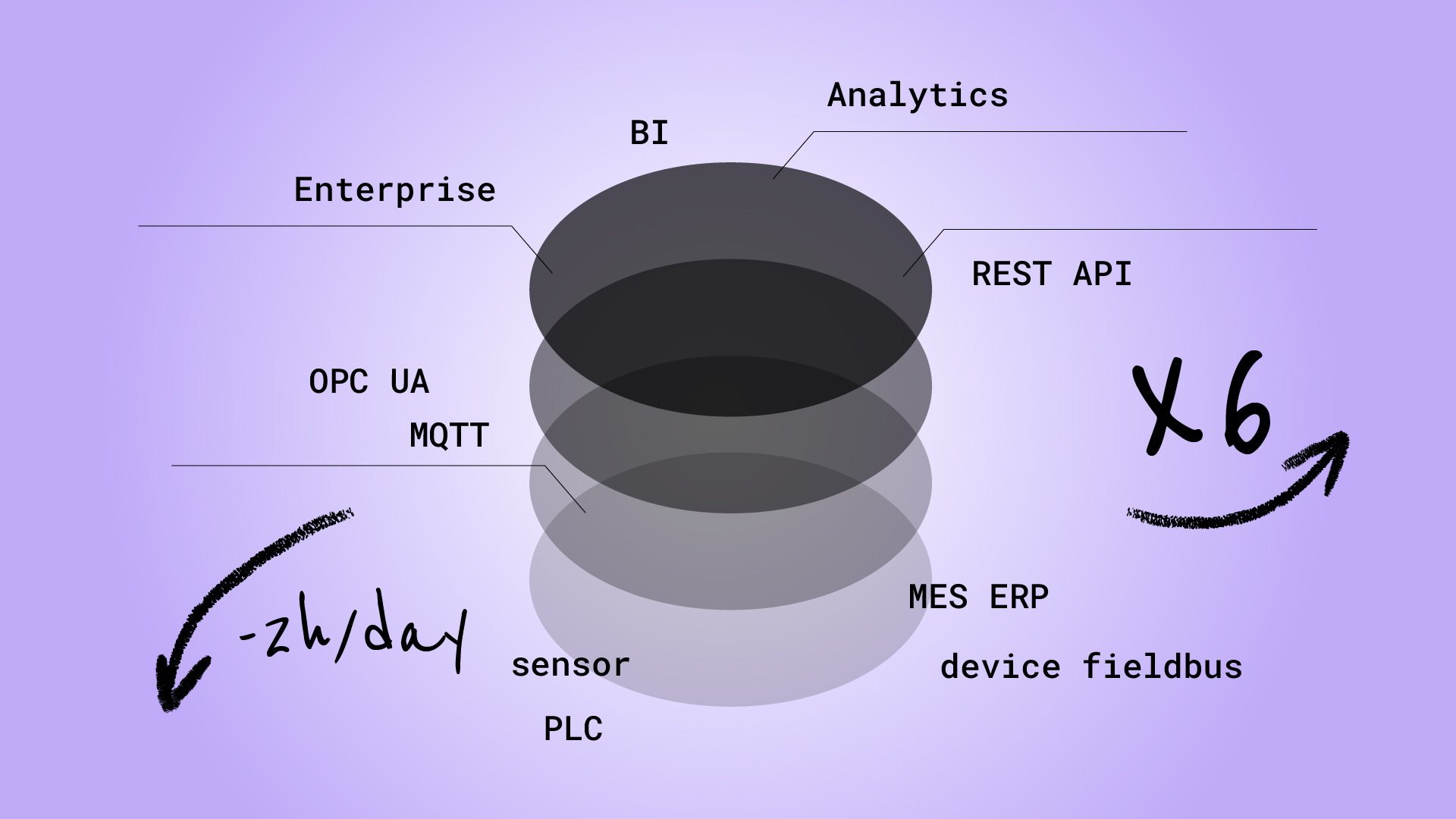
Industrial IoT connectivity challenge. Things to know!
 IoT device connectivity enables an environment in which industrial assets can communicate with each other and cooperate to optimize the entire production process. What are the challenges?
IoT device connectivity enables an environment in which industrial assets can communicate with each other and cooperate to optimize the entire production process. What are the challenges?
Let's see together what these challenges are and how best to overcome them!
What are the main challenges related to Industry 4.0 interconnection?
Companies still face several challenges when trying to digitize an existing manufacturing plant.
Connecting a heterogeneous set of machines is a challenge related to 3 main factors:
- Standardization of communications: machines come from different manufacturers and use other communication protocols, making it challenging to create an environment where these can communicate smoothly and interoperably.
- Compatibility: each machine may use a proprietary communication protocol or a specific standard, making the integration within the same shopfloor complex.
- Integration: getting outdated machinery to communicate with iot native systems pose a significant challenge. Many industrial plants were designed and built before the advent of Industry 4.0, not set up for interconnection.
Let us now explore together, specifically, how to overcome these obstacles!
How to enable IoT device connectivity?
Industry 4.0 involves an exponential increase in the number of connected devices, which means the platform must be able to handle a high volume of real-time data. It requires a robust network infrastructure and the ability to scale the platform to support the growing number of devices without compromising overall system performance.
Implementing a scalable, flexible, and secure IoT connectivity platform is essential to manage the data generated by connected machines.
Let's take a detailed look at the features an IoT connectivity platform must have to overcome connectivity challenges:
- Security and data protection
With increasing interconnections and information exchanged, between machines and IT systems, it becomes critical to ensure the security of sensitive data and protect the entire network from potential threats. It's possible by adopting authentication and access authorization mechanisms so that only authorized devices and users can interact with the system. In addition, data encryption is essential to ensure the confidentiality and integrity of information during transmission and storage.
In addition, to protect data from unauthorized access, it is also crucial to prevent cyber attacks that could compromise the entire IoT network.
Addressing these difficulties necessitates continual awareness and efforts to maintain data security and protection in the IoT ecosystem. Companies must collaborate with cybersecurity experts, adopt advanced technologies, and develop clear policies and procedures to mitigate risks and maintain a secure and reliable IoT environment.
- Scalability and flexibility
Machine connectivity in Industry 4.0 necessitates an IoT platform, scalable and flexible, to handle the expanding number of connected devices and react to changing business demands.
Scalability enables the IoT infrastructure to grow and support more nodes without compromising system performance or reliability.
Flexibility is equally important in the context of Industry 4.0. It makes it possible to adapt to the different needs and requirements of machines and systems in the manufacturing environment. It means that companies can add or replace existing devices without changes to the entire infrastructure and enable smooth communication between machines, regardless of the protocol. It simplifies integration and promotes efficient collaboration between devices.
The importance of scalability and flexibility in the IoT environment is evident when considering the evolution of business needs over time.
- Integration of legacy systems
Many existing industrial facilities still use outdated technologies and infrastructure that may not be natively compatible with new Industry 4.0 solutions. An IIoT platform, in this sense, serves as a link between older systems and Industry 4.0 devices and solutions.
Indeed, it is possible to connect legacy systems to the IIoT platform, enabling communication and data sharing with new machines and systems. This gradual and controlled integration allows companies to leverage existing resources and investments, avoiding costly upgrades of legacy systems.
An IIoT platform provides the tools needed to address these challenges, enabling companies to make the most of their resources and gradually migrate to Industry 4.0 solutions, providing short-term benefits without a costly complete replacement of legacy systems.
In conclusion, the interconnection of machines in Industry 4.0
requires an IoT connectivity platform that can address the challenges of communications standardization, compatibility between protocols, integration of legacy systems, data security, and managing the increasing volume of connected devices.
A platform, such as the Alleantia one, enables these challenges to be overcome effectively.
It makes it possible to integrate legacy systems, ensure data security, manage the growing volume of connected devices, and foster standardization and collaboration among companies. With Alleantia, companies can leverage the full potential of Industry 4.0, achieving significant benefits such as optimizing operations, increasing efficiency, and creating a state-of-the-art manufacturing environment.
What are you waiting for?
Boost your business with Alleantia!
CLICK HERE


